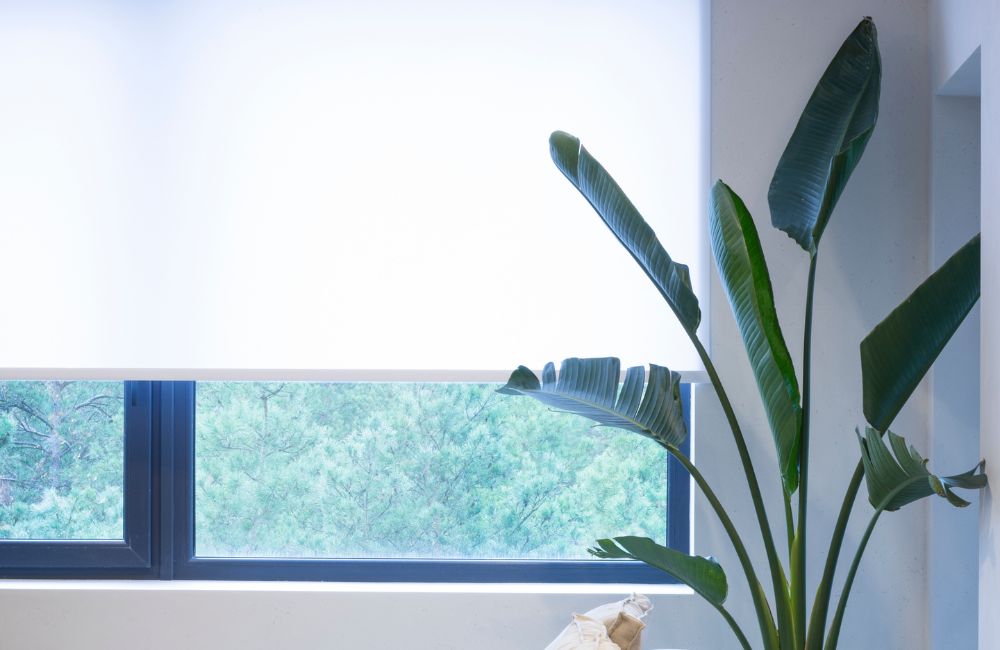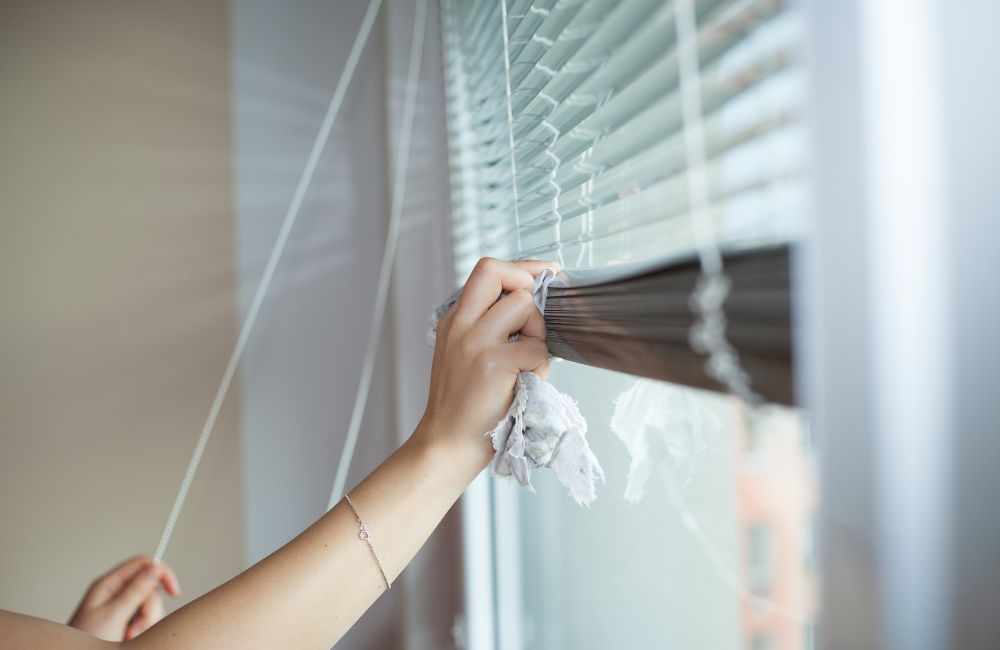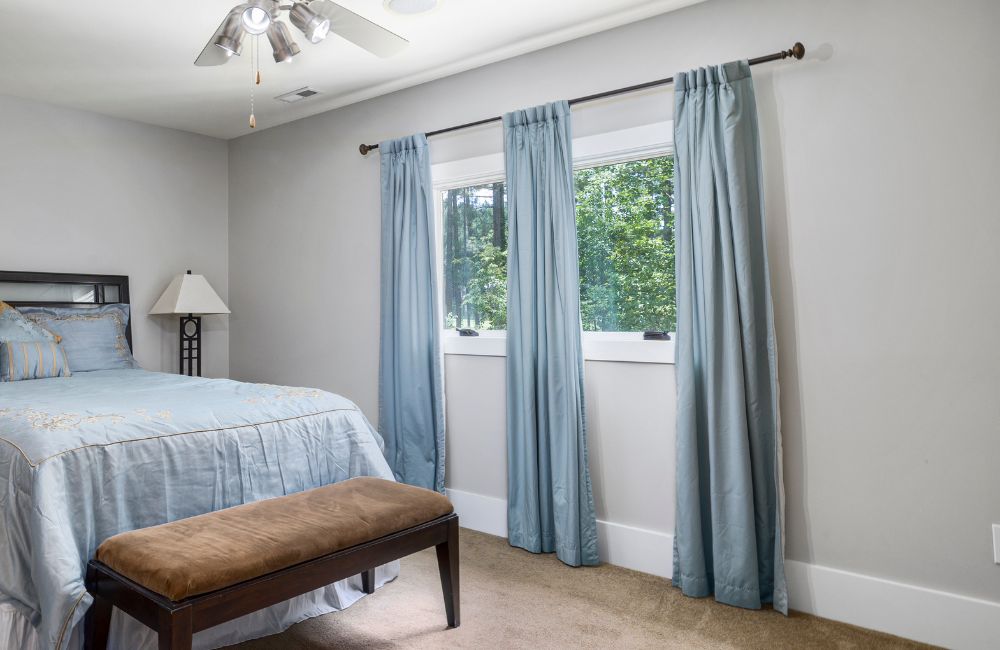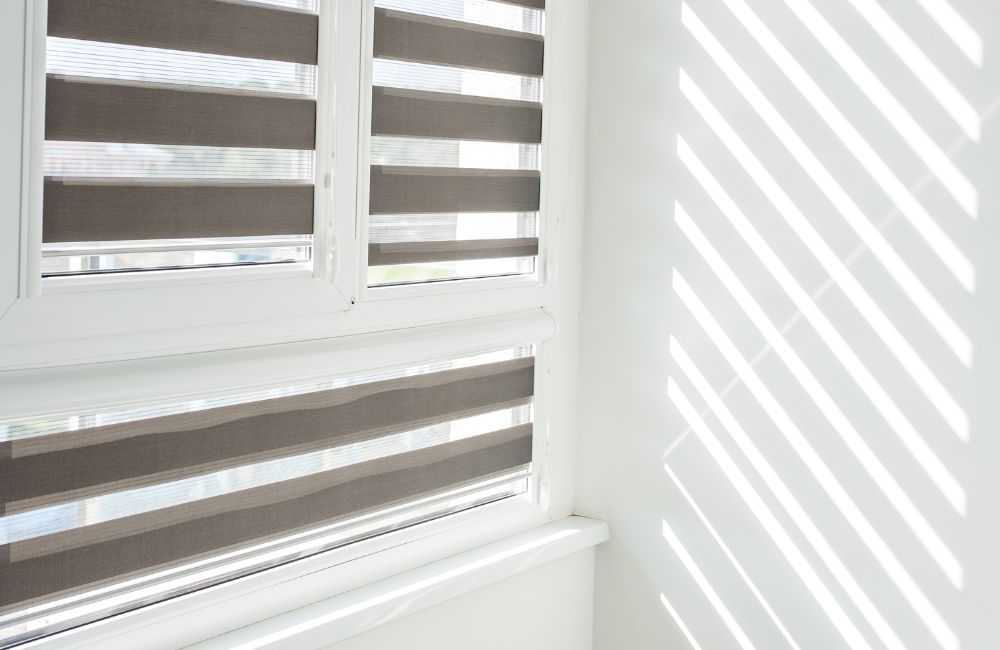
Table of Contents
Key Takeaways✔ Identify how the room is used to determine the level of light control needed. ✔ Evaluate the amount of sunlight the windows receive throughout the day. ✔ Select materials that balance style, durability, and the desired level of light filtration. ✔ Opt for coverings that offer adjustable light levels for maximum flexibility. ✔ Ensure window coverings complement the room’s overall design and aesthetic. |
Selecting the best custom window coverings for light control is essential to creating a comfortable, functional, and stylish space. The right window treatments not only manage the amount of natural light entering your room but also enhance privacy and complement your interior design. With a variety of options available, it’s important to consider factors like the room’s purpose, light exposure, and material choice to make an informed decision.
Here’s a guide to help you choose the ideal coverings for optimal light control.

How to Find the Perfect Custom Window Coverings for Controlling Light
1. Assess the Room’s Purpose
When selecting the best custom window coverings, the first step is to assess the purpose of the room. Understanding how you use the space and what activities take place there is essential to choosing window treatments that will effectively manage light and privacy.
Identify How You Use the Room
Each room in your home serves a different purpose, and your custom window coverings should align with those needs. For example:
- Living Room: This is typically a social space where you might want plenty of natural light, but also the ability to reduce glare during certain times of the day.
- Bedroom: Here, privacy and light control are critical. You may want complete darkness for sleeping or the option to gradually let in morning light.
- Home Office: Productivity is essential in this space, so you’ll need custom window coverings that reduce screen glare while still letting in natural light. Research shows that workers in daylight-filled offices experienced 51% less eyestrain, 63% fewer headaches, and a 56% decrease in drowsiness.
- Living Room: This is typically a social space where you might want plenty of natural light, but also the ability to reduce glare during certain times of the day.
Determine the Level of Light Control You Need
The activities performed in each room dictate the level of light control required. Ask yourself the following questions:
- Do you need full darkness? For bedrooms or media rooms, blackout shades or curtains are ideal to block out all light.
- Do you want soft, diffused light? Living rooms, dining rooms, or kitchens often benefit from custom window coverings like sheer shades or light-filtering blinds, which let in natural light while minimizing harsh sunlight.
- Do you need variable light control? Rooms that serve multiple purposes, such as open-plan living areas or home offices, might need coverings like motorized blinds that can easily adjust to different light levels throughout the day.
- Do you need full darkness? For bedrooms or media rooms, blackout shades or curtains are ideal to block out all light.
Consider Privacy Needs in Addition to Light Control
Light control isn’t the only factor to consider; privacy is equally important. Depending on the location of the room, you may want window coverings that offer both light management and privacy.
- Bedrooms and bathrooms: These spaces demand custom window coverings that provide complete privacy without compromising light control. Opaque shades, blackout curtains, or dual-layered treatments are often suitable.
- Ground-floor rooms: If your living room or kitchen is on the ground floor, you’ll likely want window coverings that prevent people from seeing inside while still allowing light to enter. Top-down/bottom-up shades or privacy blinds can offer the right balance.
- Kitchens and sunrooms: In these rooms, you might prioritize light over privacy. Light-filtering custom window coverings like sheer blinds or shades can offer minimal privacy while still allowing a bright, open feel.
- Bedrooms and bathrooms: These spaces demand custom window coverings that provide complete privacy without compromising light control. Opaque shades, blackout curtains, or dual-layered treatments are often suitable.
2. Understand Light Exposure
When choosing custom window coverings, understanding how light enters your space is crucial to achieving the right level of light control. Different windows face different directions, and each direction brings varying amounts of natural light throughout the day. Here’s how you can evaluate the light exposure in your home and select the right coverings for each space.
Evaluate Window Direction and Sunlight Exposure
Evaluating direction and sunlight exposure is key to choosing the right custom window coverings. Here’s how different orientations impact your space.
- North-facing windows: These windows receive soft, indirect light throughout the day, making them ideal for spaces that don’t require intense light control. Custom window coverings such as light-filtering shades or sheer curtains can work well here.
- South-facing windows: Known for receiving the most sunlight throughout the day, south-facing windows often need more significant light control. Opt for custom window coverings that offer both light filtering and room-darkening options, such as roller shades or layered treatments with drapes and blinds.
- East-facing windows: These windows get strong, direct morning light. To control early morning brightness, custom window coverings like blackout shades or blinds with adjustable slats can help minimize glare.
- West-facing windows: As the sun sets, west-facing windows receive harsh afternoon and evening sunlight. Consider custom window coverings that can block or diffuse this intense light, such as roman shades, solar shades, or plantation shutters.
- North-facing windows: These windows receive soft, indirect light throughout the day, making them ideal for spaces that don’t require intense light control. Custom window coverings such as light-filtering shades or sheer curtains can work well here.
Track Light Changes Throughout the Day
Different rooms in your home may experience varying light conditions based on the time of day. To ensure optimal light control, observe how the light changes:
- Morning: Spaces with east-facing windows will have bright, intense light, while other rooms may remain dim.
- Afternoon: South-facing windows are likely to get the brightest light, but west-facing windows will become the strongest source of sunlight later in the day.
- Evening: West-facing windows experience the most direct light at this time, which can create heat and glare if not managed with the right custom window coverings.
- Morning: Spaces with east-facing windows will have bright, intense light, while other rooms may remain dim.
Consider the Impact of Light on Furniture and Decor
Strong sunlight can fade upholstery, flooring, and artwork over time. Custom window coverings play an essential role in protecting your investments.
- UV protection: Opt for coverings like solar shades or blackout curtains to block harmful UV rays, as ultraviolet radiation (UV) is the leading cause of fading in fabrics, carpets, and other furnishings, helping to preserve the color and quality of your décor.
- Glare reduction: Opt for window treatments that allow you to control glare, such as blinds with tiltable slats or motorized shades that can be easily adjusted throughout the day.
- Heat control: Rooms that experience intense sunlight can benefit from energy-efficient custom window coverings, like cellular shades, which help insulate the space and prevent heat buildup.
- UV protection: Opt for coverings like solar shades or blackout curtains to block harmful UV rays, as ultraviolet radiation (UV) is the leading cause of fading in fabrics, carpets, and other furnishings, helping to preserve the color and quality of your décor.

3. Choose the Right Material
Selecting the right material is key to achieving the perfect balance of light control, style, and functionality in your home. When choosing custom window coverings, it’s essential to consider how much light you want to filter into your space and how the material aligns with your lifestyle needs.
Consider Light Filtration Needs
The first step in choosing the right material is understanding how much light control you need. Different materials offer varying levels of light filtration, and your decision should be based on how much natural light you want in the room.
- Sheer Fabrics: Ideal for rooms where you want soft, diffused natural light. Sheer curtains or shades allow light to pass through while still offering some level of privacy.
- Light-Filtering Fabrics: These materials strike a balance by allowing light in but reducing harsh sunlight. They are great for living rooms or dining areas where you want natural light without glare.
- Blackout Materials: Perfect for bedrooms or media rooms where complete darkness is preferred. Blackout shades and curtains block all light, helping to create an ideal sleep or viewing environment.
- Sheer Fabrics: Ideal for rooms where you want soft, diffused natural light. Sheer curtains or shades allow light to pass through while still offering some level of privacy.
Balance Aesthetics and Functionality
While the primary function of custom window coverings is to control light, they also serve as a major design element in any room. Selecting materials that balance aesthetics and functionality will enhance the overall look and feel of your space while providing the desired light control.
- Wood Blinds: For a natural, timeless look, wood blinds are a great option. They allow for adjustable light control while adding warmth and texture to a room. They are especially good for living rooms, offices, or dining areas where you want a cozy yet elegant feel.
- Honeycomb Shades: If energy efficiency is a priority, honeycomb shades are an excellent choice. These shades trap air in their cells, providing insulation and light control. They come in light-filtering or blackout options, making them versatile for different rooms.
- Roman Shades: For a more luxurious look, Roman shades offer elegance and functionality. They can be made from a variety of materials, including cotton, silk, or linen, and offer varying levels of light filtration depending on the fabric choice.
- Wood Blinds: For a natural, timeless look, wood blinds are a great option. They allow for adjustable light control while adding warmth and texture to a room. They are especially good for living rooms, offices, or dining areas where you want a cozy yet elegant feel.
Factor in Durability and Ease of Cleaning
When selecting materials for your custom window coverings, consider how durable they are and how easy they are to maintain, especially if the room experiences high traffic or humidity. The right material should withstand daily use and be easy to clean to ensure long-lasting beauty and functionality.
- Durable Materials for High-Traffic Areas: In rooms like kitchens or playrooms, where wear and tear are common, choose materials like faux wood or aluminum blinds that can resist moisture, heat, and dirt. These materials are easy to wipe down and maintain, making them ideal for busy spaces.
- Low-Maintenance Fabrics: If you prefer fabric window coverings, opt for materials like polyester blends or treated cotton, which resist staining and are easier to clean. These are especially useful in dining rooms or family rooms where spills or fingerprints are more likely.
- Moisture-Resistant Materials: For bathrooms or kitchens, where humidity is a concern, consider moisture-resistant materials like vinyl shades or faux wood blinds. These materials are resistant to warping and easy to clean, making them ideal for humid environments.
- Durable Materials for High-Traffic Areas: In rooms like kitchens or playrooms, where wear and tear are common, choose materials like faux wood or aluminum blinds that can resist moisture, heat, and dirt. These materials are easy to wipe down and maintain, making them ideal for busy spaces.
4. Consider Flexibility in Light Control
For your custom window coverings, flexibility in light control is crucial for creating the perfect ambiance in your space. Whether you want to let in soft, diffused light or block out sunlight entirely, the right window treatment can help you achieve your desired level of brightness and privacy.
Opt for Adjustable Light Levels
Custom window coverings should allow you to control the amount of light entering a room. This can be achieved through various mechanisms, from manual adjustments to advanced motorized systems. Here are some popular types of coverings that offer flexible light control:
- Dual Shades
- Light filtering: These shades allow sunlight to softly filter through the room, perfect for spaces where you want natural light without harsh glare.
- Blackout option: With dual shades, you can easily switch to a blackout setting when complete darkness is needed, such as in a bedroom or media room.
- Light filtering: These shades allow sunlight to softly filter through the room, perfect for spaces where you want natural light without harsh glare.
- Motorized Blinds: Motorized blinds offer the ultimate convenience, allowing you to adjust light levels with the press of a button. They’re perfect for hard-to-reach windows or modern spaces where you want sleek, automated solutions.
Explore Layered Treatments for Better Control
One of the best ways to maximize light control is by using layered treatments. This approach involves combining different types of custom window coverings to achieve greater flexibility and style.
- Blinds with curtains: Use blinds for precise control over how much light enters the room, and add curtains for additional privacy and warmth.
- Sheer shades with blackout drapes: Sheer shades allow natural light to flow in during the day, while blackout drapes can be drawn at night for total privacy and darkness.
- Shades with valances: Layering shades with decorative valances can help soften the look of your windows while still giving you control over light and privacy.
- Blinds with curtains: Use blinds for precise control over how much light enters the room, and add curtains for additional privacy and warmth.

5. Harmonize with Interior Design
When deciding on your custom window coverings for your home, it’s essential to ensure they blend seamlessly with your overall interior design. Window coverings not only control light and provide privacy, but they also significantly impact the room’s ambiance and aesthetic.
Coordinate Colors, Textures, and Patterns
One of the most important aspects of choosing custom window coverings is to align them with the existing color palette and style of your room. You want your window treatments to complement the space, not clash or feel out of place. Here are a few tips to help guide your decision:
- Color Matching: Choose neutral tones for a classic, timeless look. For bold accents, opt for custom window coverings in vibrant hues that match or contrast key elements like throw pillows or rugs. Consider the wall color and furniture; darker window treatments can ground the space, while lighter shades can create an airy feel.
- Texture Selection: If your room is full of smooth surfaces, adding textured window coverings, such as linen or woven wood, can introduce a sense of warmth and depth. Pair velvet curtains with luxurious, formal interiors, or go for cotton or sheer materials for a relaxed, casual atmosphere.
- Pattern Choices: Use patterns on custom window coverings to introduce visual interest, especially in solid-colored rooms. Stick to smaller, subtle patterns in minimalist spaces to avoid overwhelming the design. For a bold look, large-scale patterns on drapery or shades can become a statement feature in the room.
Avoid Overly Heavy Treatments in Small Rooms
When designing smaller spaces, it’s important to be mindful of the weight and bulk of your custom window coverings. Heavy fabrics and large, thick treatments can make a room feel cramped and overwhelming. Here’s how to avoid that:
- Go for Light and Airy: Choose lightweight fabrics like sheer curtains or light-filtering shades to allow natural light to brighten the room while maintaining a sense of openness. Opt for sleek, streamlined blinds or roller shades that don’t take up much visual or physical space.
- Keep It Simple: Stick with simple designs that are proportional to the room size. Floor-to-ceiling drapes may overwhelm a small room, but custom-fitted shades can add elegance without crowding the space. Use lighter colors on your custom window coverings to make the room appear larger and more spacious.
- Go for Light and Airy: Choose lightweight fabrics like sheer curtains or light-filtering shades to allow natural light to brighten the room while maintaining a sense of openness. Opt for sleek, streamlined blinds or roller shades that don’t take up much visual or physical space.
Frequently Asked Questions
What are the benefits of choosing custom window coverings over ready-made options?
Custom window coverings are tailored to fit the exact dimensions of your windows, ensuring a perfect fit and optimal functionality. Unlike ready-made coverings, they offer a wider range of materials, styles, and design options, allowing you to match your home’s décor and personal taste. They can also be customized with specific features, like motorization or UV protection, which may not be available in standard options. Additionally, custom coverings can enhance energy efficiency by providing better insulation, which helps regulate indoor temperatures.
How do I measure my windows for custom coverings?
Measuring for custom window coverings involves taking precise measurements of both the width and height of your windows. Use a steel measuring tape for accuracy, and measure at three points—top, middle, and bottom—to account for any irregularities in window frames. If you’re measuring for inside mount shades, deduct a small amount (about 1/8 inch) from the width to ensure the covering fits within the frame. For outside mounts, add extra inches to ensure full coverage and enhanced light blockage.
How do I clean and maintain custom window coverings?
The cleaning process for custom window coverings depends largely on the material. For fabric shades or curtains, regular dusting or vacuuming with a soft brush attachment can prevent dirt buildup, while some fabrics may also be machine-washable or dry-cleanable. Blinds and shutters can be wiped down with a microfiber cloth or damp cloth for more stubborn dirt. Always check the manufacturer’s care instructions, as some materials, like real wood or delicate fabrics, may require special care or professional cleaning.
How does window tinting or film affect the light entering a room?
Window tinting or film reduces the amount of UV rays and heat that penetrate through windows while still allowing natural light to enter the room. Depending on the type of film, it can range from slightly darkening the room to providing a near-invisible shield that protects against harmful UV rays without significantly affecting light levels. Some films are designed to block glare and solar heat gain, making rooms more comfortable during sunny periods. These films are an excellent choice for those wanting to reduce energy costs while maintaining bright, natural light.
How does the season or time of day affect the amount of light coming through a window?
The angle and intensity of sunlight change with the seasons and time of day, impacting how much light enters a room. During the summer, the sun is higher in the sky, often flooding rooms with more direct light, while in winter, the sun is lower, providing softer and less intense light. Morning light (east-facing windows) tends to be warm and gentle, whereas afternoon light (west-facing windows) is stronger and can cause glare and heat buildup. Seasonal shifts can affect not only the brightness but also the temperature of a room, making flexible window treatments essential for year-round comfort.
Post that you may also like:
Top 7 Mistakes to Avoid When You Order Blinds for Your Home

Discover the Perfect Window Coverings for Your Southampton Home!
At East End Blinds & Window Treatments, we specialize in helping homeowners in Southampton, NY, find the ideal custom window coverings that enhance both style and function. Whether you’re looking for elegant shades, energy-efficient blinds, or beautifully textured drapery, our team is here to guide you through every step of the process. Visit us in Southampton, NY, and let us bring your vision to life with our expert design and installation services.
Your home in Southampton deserves the best. Contact us today let us make it happen with tailored solutions just for you.
